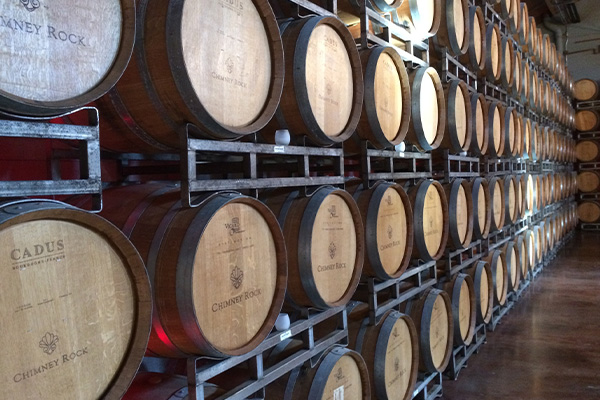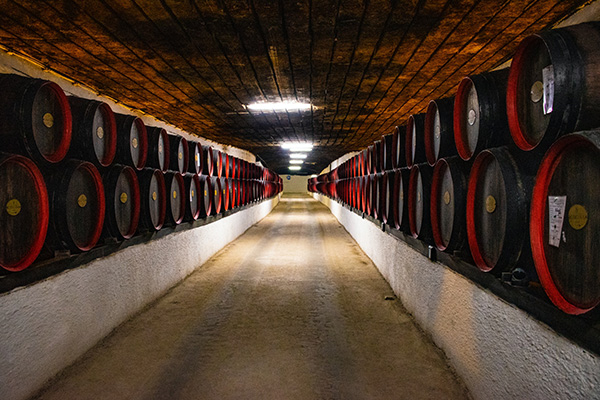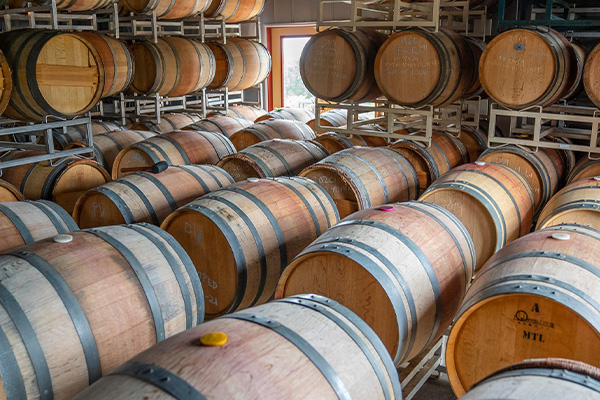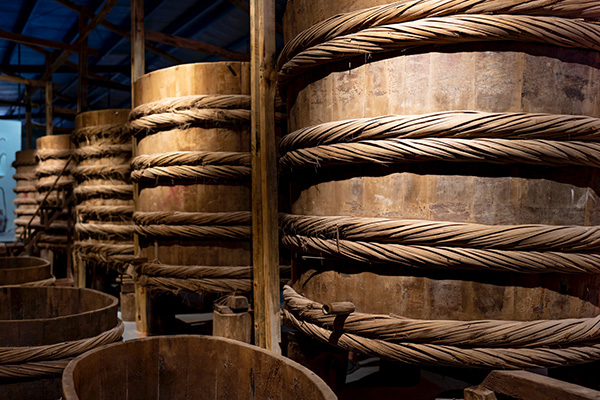Fermenters are bioreactors that aid the fermentation process. This provides the ideal growth environment for animal cells or microorganisms. Fermenters are fermentation vessels used to cultivate large amounts of bacteria and fungus. This includes the Penicillium mold used to make penicillin (an antibiotic). Glass or stainless steel fermenters come in various sizes. Each with a different volume capacity:
- Small-sized fermenters with a capacity of 1–2 liters;
- 12–15 liters in Medium size; and
- Large-scale production fermenters with a capacity of 100,000 gallons.
You can use fermenters to make various products. Those used in dairy, food and alcoholic beverages, and pharmaceuticals.
Furthermore…
It’s an apparatus used in large-scale fermentation for commercial production. This maintains optimal conditions for the development of microorganisms.
While…
Others describe it as an organism that causes fermentation, such as yeast.
Fermenters come in a variety of shapes and sizes…
- Stirred tank fermenters, for starters, are useful for batch processing.
- Pneumatic reactors airlift fermenters suit for aerobic cultures; and
- Proteins, enzymes, and antibiotics are all produced in bubble column fermenters.
Batch operation is the most common mode of operation for laboratory-scale fermenters. The fed-batch or continuous mode is more suggested. This is because this method reduces growth and productivity. The fed-batch approach is appropriate when product creation links to rapid biomass growth.
Also…
Conical fermenters and square bodies, which are square-shaped vessels, are also popular fermenters. Conical fermenters are more expensive than cylindrical fermenters, providing several benefits. You can add whirlpool to conical fermenters to help separate the trub from the wort.
Square-bodied fermenters are less expensive than conical and cylindrical fermenters. But, they can’t handle high-pressure dips as well.
Related Articles:
- How To Brew Beer: The Definitive Guide For At Home Brewing
- How To Calculate ABV (Alcohol By Volume)
- How To Taste Beer Like A Professional Beer Taster
History Of The Use Of Fermentation

According to Forbes, consumption of fermented foods increased by 149 percent in 2018. This indicates the longevity of this ancient diet. Also, this answers how globalization has brought fermented foods to new cultures.
The beginnings of fermentation are difficult to trace back to human history itself.
However…
Historians have discovered evidence of fermentation in 7000BC. It’s found in the preparation of food and beverages.
Fermentation comes from the Latin verb ‘fervere,’ which means “to boil.” Also, this refers to the process by which yeast turns fruit juice or malted barley into alcohol. Almost every culture adopts fermentation. People have been collaborating with natural bacteria for much longer than we realize!
According to research…
Other societies used fermentation for other grain-based beverages as early as 4000 BC. Time has forgotten how it all began. One germ, yeast, has existed for at least 80 million years.
Furthermore…
Fermentation in nature predates human history. Humankind has used fermentation since the dawn of humanity. The oldest evidence of fermentation is 13,000-year-old beer dregs in a cave near Haifa, Israel. It had the consistency of gruel.
Most living things today use oxygen to generate ATP from glucose. Yet, many living things can produce ATP in the absence of oxygen. This is true for many plants and fungi, and many bacteria. When oxygen is available, these organisms use aerobic respiration.
Even so…
When oxygen is scarce, they use anaerobic respiration. Certain bacteria can only breathe anaerobically. They may be unable to survive in the presence of oxygen at all.
Fermentation is an important method of producing ATP without the use of oxygen. It includes glycolysis but excludes the other two stages of aerobic respiration. A variety of bacteria and yeasts carry out fermentation. Using these organisms, you can make yogurt, bread, wine, and biofuels. Fermentation is also used by human muscle cells.
Working/Process

Fermentation is how yeast turns glucose in the wort into ethyl alcohol and CO2. This will give the beer its alcohol level and carbonation. The fermentation process can begin once enough ‘food’ is in the wort. And then when the first flavor development is complete. When you add yeast to the liquid, it will consume glucose.
To get the fermentation started…
Place the cooled wort in a fermentation vessel that’s yeast-inoculated. If the beer is an ale, keep the wort at a steady temperature of 68 degrees Fahrenheit for around two weeks. If the drink is lager, keep the temperature at 48 ° F for six weeks. Because fermentation generates a lot of heat, cool the tanks to maintain conditions.
Click the button below to check out a great Mexican Lager Recipe. Easy to make, step by step instructions.
Nevertheless…
Fermentation doesn’t begin right away. Oxygen may be present, allowing yeast to breathe rather than ferment. Yeasts use oxygen to break down glucose, resulting in producing no ethanol. Glucose converts into water and CO2 instead of glucose. This will extract as much energy as workable from the glucose molecule.
Moreover…
The fermenter is completely shut off from the outside world. Save for a long, narrow vent pipe that permits carbon dioxide to escape. Because there is a steady flow of CO2 through the pipe, keep the outside air out of the fermenter. These prevent the contamination of stray yeast.
The majority of the yeast might settle to the bottom of the fermenter when it’s complete. The fermenter’s bottom is cone-shaped. This makes it easier to trap and extract the yeast, making it easier to store and reuse for the next batch of beer. Before you need to change it, use the yeast several times. When it mutates and produces a new flavor, replace it.
Remember…
Commercial production and brewing are all about uniformity. After fermentation is complete, cool the beer to roughly 32 ℉. This helps the residual yeast at this lower temperature settle to the bottom.
Pump the beer from the fermenter and filter to cut any remaining solids. Most of the sediments have now dropped to the bottom. After passing through the filter, transfer the beer to a bright beer tank. This is the final stop on the way to bottling or kegging. Regulates the level of carbon dioxide in the beer by bubbling a little extra CO2 into it through a porous stone.
The basic fermentation process for beer is the same as for yeast fermentation. Glucose breaks down into ethanol (alcohol) and CO2 (a gas). Nonetheless, fermentation involves much more than the creation of these two molecules!
Biological Role

Fermentation, like aerobic respiration, is a way of extracting energy from molecules. This is the only mechanism that all bacteria and eukaryotes use. As a result, it’s considered to be the earliest metabolic route. It’s appropriate for prehistoric conditions. This covers folks who lived before the Earth’s first plant life appeared. Also, the presence of oxygen in the atmosphere.
Moreover…
Yeast is a fungus that can grow in any environment, supporting bacteria. Examples are fruit skins, bugs, mammalian guts, and the deep ocean. Sugar-rich compounds convert (broken down) by yeasts into ethanol and carbon dioxide.
You can find basic fermentation pathways in all cells of higher organisms. All bacteria and eukaryotes use the same approach.
Moreover…
You can find yeast, a type of fungus, in any habitat where bacteria survive. In all cells of higher organisms, basic fermentation pathways are still present. Fermentation likewise generates succinate and alanine in crustaceans.
Apart from that…
Fermentative bacteria involved in creating methane in a variety of environments. This includes bovine rumens, sewage digesters, and freshwater sediments. Hydrogen, carbon dioxide, formate, acetate, and carboxylic acids are all produced. The carbon dioxide and acetate are then converted to methane by microbial colonies.
Acetogenic bacteria oxidize acids to produce more acetate, hydrogen, or formate. Methanogens (in the Archaea domain) then convert acetate to methane. Fermentation is the most common way for bacteria to produce adenosine triphosphate (ATP). This is through the anaerobic breakdown of organic acids.
Humans have utilized fermentation to make meals and drinks since the Neolithic period.
As an example…
Fermentation is a process that creates lactic acid. You can find it in sour foods like pickled cucumbers, kombucha, kimchi, and yogurt. You can also find it in alcoholic beverages like wine and beer. Industrial fermentation uses microbes to produce chemicals and enzymes on a massive scale. Fermentation takes place in all species’ gastrointestinal tracts, including humans.
Types
- Lactic Acid
Lactic acid from pyruvate is produced during glycolysis. NAD+ is made from NADH. The enzyme lactate dehydrogenase catalyzes this process. Lactobacillus bacteria use this sort of fermentation to make curd from milk. When the oxygen supply is insufficient during hard exercise, muscles generate lactic acid. This builds up in the cells and causes weariness.
Lactic acid fermentation is a method used by animals and certain bacteria. Mammalian red blood cells and skeletal muscle use this form of fermentation. This doesn’t have enough oxygen to continue aerobic respiration. Lactic acid accumulation in muscles must be taken down by blood circulation.
And then…
The lactate will be transported to the liver for further metabolism. The following are the chemical reactions of lactic acid fermentation:
Pyruvic acid + NADH ⟷ lactic acid + NAD+
Lactate dehydrogenase (LDH) is the key enzyme in this reaction. The reaction can take either of two paths. Even so, acidic conditions inhibit the reaction from left to right. Some thought that lactic acid buildup causes muscle stiffness, fatigue, and soreness. Although more recent research calls this hypothesis into question.
When there’s removal and circulation of lactic acid from the muscle to the liver…
…it’s converted back into pyruvic acid and catabolized for energy.
- Alcoholic fermentation
This is utilized in manufacturing wine, beer, biofuel, and other industrial products. Alcohol and CO2 are the final products. Pyruvic acid degrades into acetaldehyde, which releases CO2. Acetaldehyde is then converted to ethanol in the next phase. NADH also produces NAD+, which is used in glycolysis.
This sort of fermentation is carried out by yeast and bacteria. These fermentation processes are catalyzed by pyruvic acid decarboxylase and alcohol dehydrogenase enzymes.
Furthermore…
Yeasts convert pyruvate molecules in starches or sugars to alcohol and carbon dioxide, resulting from glycolysis (C6H12O6) metabolism. Wine and beer are made through alcoholic fermentation.
- Acetic Acid
Fruit starches and sugars ferment, creating vinegar and sour condiments. It’s an oxidation process in which bacteria turn alcohol into acetic acid. This method yields acetic Vinegar. Apple cider vinegar, wine vinegar, and kombucha are a few examples of vinegar. There are two steps to this procedure.
The first stage uses yeast to produce ethyl alcohol from sugar anaerobically. The second stage involves utilizing acetobacter bacteria. This is to oxidize ethyl alcohol further to create acetic acid. The aerobic process of microbial oxidation of alcohol to acid occurs.
In the presence of excess oxygen, Acetobacter converts alcohol to acetic acid. One mole of oxidized-ethanol yields one mole of acetic acid and one mole of water.
Also…
You need some form of acetic acid bacteria (AAB) in the mix to get acetic acid. Based on the drinks you’re making, this will usually take a varied shape. Kombucha, vinegar, water kefir, lambic beers, and nata de coco are all made using AAB.
Regardless of which of these tiny guys you locate…
They’re all members of the Acetobacteraceae family, which simplifies things a bit.
Stages
- Primary Fermenter
Primary fermentation has two stages. The yeast produces aerobic respiration during the first stage. It goes through a series of alterations to adapt to its new surroundings. This is why it’s called the Adaptive Phase.
Besides that…
CO2 and water are the primary byproducts of respiration. The yeast cells form walls that are permeable to the sugars and nutrients in your beer. This phase only lasts a few hours.
And then…
The Attenuative Phase is the following stage of primary fermentation. The formation of a huge head of froth at the top of your fermentation jar, known as krausen, signifies this stage. This step converts the majority of the sugars in your brew into alcohol.
CO2, as well as several forms of alcohol, are the principal byproducts of this step. This step can take anywhere from 2 to 7 days, depending upon the type of beer and other factors like temperature. Although it usually takes at least two days and no more than a week.
- Secondary Fermenter
Two-stage fermentation refers to fermenting with two fermenters rather than one. Homebrewers will begin with one fermenter. Because it’s the initial vessel, this fermenter is the main fermenter. You can use the secondary fermenter when moving the wort to another vessel.
Furthermore…
Use a smaller glassware carboy as a secondary fermenter. Use a 6.5-gallon fermenter as a primary and a 5-gallon fermenter as a secondary for 5-gallon batches.
So, what makes you want to go the extra mile?
The primary function of the second vessel is to allow the yeast to settle and the beer to age. You’re separating the beer from the sediment layer collected during primary fermentation. You can do it by transferring it to a secondary fermenter. This stops the beer from absorbing the sediment’s off-flavors.
Plus…
Yeast will break out of your beer during secondary fermentation, improving its quality. As most of these can contribute to off-flavors, this also enhances and matures the flavor of your beer. Most beers will improve from secondary fermentation for these reasons.
Advantages of Fermentation

Fermentation is a time-honored method of food preservation. It is also the most crucial step in homebrewing. Fermentation is about giving the yeast the best conditions to convert your drinks. This includes the sugars in the wort into alcohol, carbon dioxide, and the flavors and smells you want. The dissolved Oxygen and ferment temperature are the most crucial characteristics of homebrewers.
Moreover…
Microorganisms convert organic molecules into alcohol or acids during fermentation. These microorganisms include bacteria, yeast, and fungus. These work as natural preservatives. This also enhances the flavor and texture of fermented food.
- Fermentation is linked to a multitude of health advantages. Fermented foods are often more nutrient-dense than their unfermented counterparts.
- Fermentation produces probiotics. This can help restore the balance of friendly bacteria in your stomach. Also, this reduces some digestive issues.
- The bacteria that live in your gut influence your immune system. Fermented foods can enhance your immune system. and lower your risk of illnesses like the common cold due to their high probiotic content.
- Fermentation aids in the breakdown of nutrients in food. This makes it easier to digest than unfermented foods.
- Fermented foods link to a lower risk of cardiovascular disease. Probiotics may also help lower total and “bad” cholesterol and lower blood pressure.
Conclusion: What Is A Fermenter?
Fermentation is all about giving the best conditions to convert the sugars in the wort. These conversions include alcohol, carbon dioxide, and the flavors and smells you want. The dissolved oxygen content and ferment temperature are the crucial characteristics of homebrewers.
If you’re new to homebrewing beer…
It’s crucial to understand how the process works and what steps to take to achieve the perfect pint. A secondary fermentation technique may be appropriate for some beer varieties. The conditioning procedure is a little more involved this time.
But…
If you are familiar with the stages of fermentation, you will make better decisions. Anyone can make a bad beer.
However…
Creating superb beer at home can be difficult. You’ll make mistakes, like in any other craft you’re trying to master. We’re all guilty of it. Continue to study and improve. There is a lot of information about fermentations that you should know.




